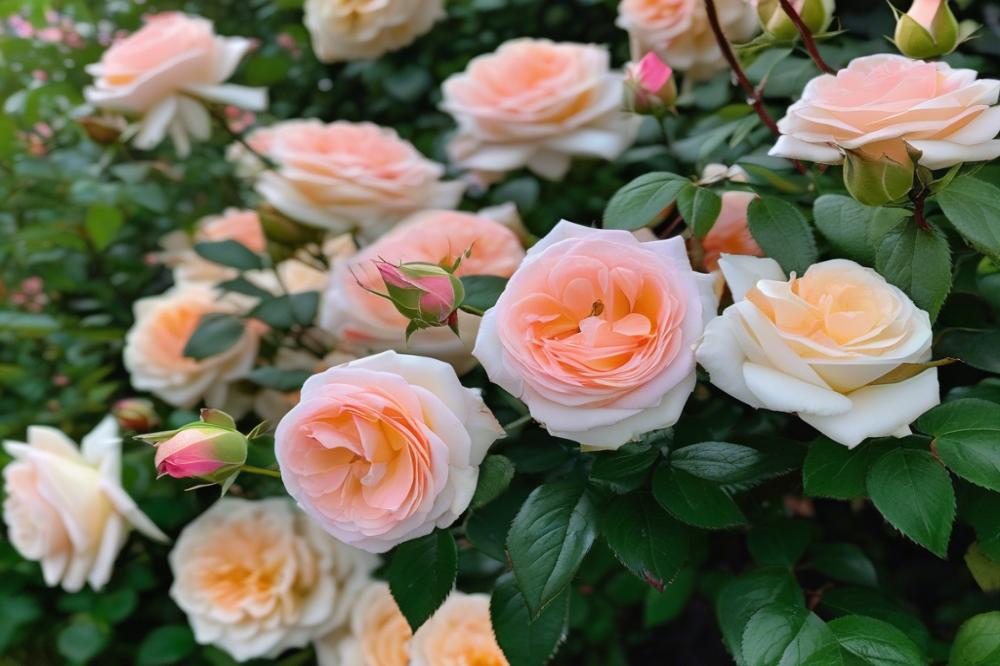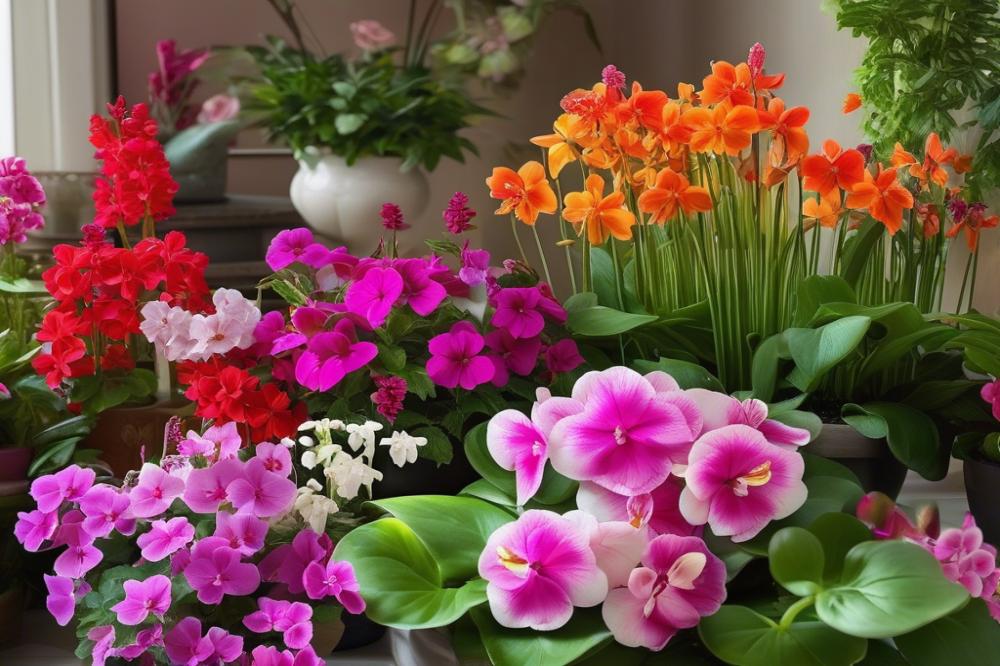Overview of Noisette Roses
Noisette Roses have a captivating charm that many gardeners appreciate. These flowering shrubs are known for their lush blooms and delightful fragrances. Originating in the early 19th century, they were developed in the United States. Their creation marked a significant advancement in rose breeding, incorporating traits from both China and the Bourbon roses.
Origin and Characteristics

The Noisette variety emerged as a result of crossbreeding efforts by a man named Philippe Noisette. His work led to the development of roses that not only resisted various diseases but also thrived in challenging conditions. The characteristic features include their climbing ability and repeat blooming tendencies. Many enjoy their stunning colors, ranging from soft pastels to vibrant shades. These roses can grow tall, making them excellent choices for trellises or fences.
Importance in Rose Gardening

In the world of rose gardening, understanding how to grow different types can make a significant difference. Noisette Roses add beauty while also enhancing garden biodiversity. They provide an excellent option for gardeners who want both attractiveness and resilience. Basic Rose Care, such as regular watering and proper pruning, can keep these plants healthy and thriving. Implementing good soil requirements, pest control, and disease prevention will pay off in the long run. With the right gardening tips, anyone can enjoy a flourishing display of roses. Whether you are planting climbing roses or bush varieties, the rewards are well worth the effort.
Understanding Noisette Roses

Definition and Classification
Noisette roses are a fascinating group of flowering plants. Originating in the early 19th century, they blend traits from both China and bourbon roses. These hybrids are known for their fragrant blooms that can transform any garden into a vibrant display. Often characterized by their climbing habit, they offer a flexible option for vertical gardening. Many gardeners appreciate their resilience and stunning foliage. When classifying these roses, they fall under the broader category of climbing roses, but their traits set them apart.
Varieties of Noisette Roses
Diverse options exist in the world of Noisette roses. Some popular varieties include ‘Champney’s Pink’ and ‘Celine Forestier.’ Each variety brings unique colors and fragrances to the garden. Selecting the right kind can enrich your outdoor space, whether you prefer soft pastels or bold hues. When planting roses, consider their growth habits and bloom times. Knowing these details will help create a visually appealing garden plan. Additionally, many varieties bloom multiple times during the season, a delightful feature for any gardener.
Comparison with Climbing Roses and flowering shrubs
Comparing these roses with other climbing roses reveals some intriguing differences. Unlike many climbing roses, which often have larger blooms, Noisettes tend to produce clusters of smaller flowers. This characteristic gives them a more delicate appearance. Flowering shrubs, on the other hand, often require different care practices. While the two share some growth traits, flowering shrubs can vary widely in size and maintenance needs. Gardening tips vary depending on the plant type. For climbing roses, more emphasis is often placed on their training and structure.
When it comes to soil requirements and watering tips, Noisette roses prefer rich, well-drained soil. They thrive in conditions that many flowering shrubs do not. Pest control remains essential, as even these hardy plants can fall victim to typical garden pests. The emphasis on disease prevention is vital for maintaining healthy growth. While gardening may seem daunting, effective rose pruning and the use of organic fertilizer can lead to flourishing blooms.
Incorporating these beautiful plants into your garden can be rewarding. With the right knowledge and care, they’ll become a magnificent part of your landscape.
Preparing for Planting Noisette Roses

Selecting the Right Location
Choose a spot that gets plenty of sunlight. These flowering shrubs thrive when they bask in full sun for at least six hours daily. A shady area might stunt growth and hinder blooming. Look for a place with good air circulation to reduce the chances of disease prevention issues. Placing them near walls or trellises can help climbing roses reach heights gracefully.
Soil Requirements for Healthy Growth
Healthy roots are critical for any healthy plant. The ideal soil is rich in organic matter and drains well. Aim for a pH level between 6.0 and 6.8 to support robust growth. Heavy clay or sandy soil can be modified. Mixing in compost or organic fertilizer creates a balanced environment for root development. Periodically testing the soil will help maintain the right conditions.
Recommended Planting Time
Timing plays a key role in successful planting. Early spring is often considered the best time to plant. At this time, rose bushes can establish their roots before the heat of summer. In milder regions, planting in fall is also an option. Ensure that the ground is not frozen if you choose this time. This allows for enough growth before winter weather sets in.
Best Practices for planting roses
Follow a few simple guidelines to maximize growth potential. Begin by digging a hole that is twice the size of the root ball. This gives roots room to expand. When placing the rose, the graft union should be just above soil level. Water the plant thoroughly after planting to settle the soil around the roots. Regular watering tips suggest keeping the soil consistently moist but not soggy. Mulch can help retain moisture and suppress weeds.
When it comes to rose pruning, removing dead or weak stems improves overall health. Don’t forget to monitor for pests. Keeping a close eye on your plants helps catch issues early. Disease prevention is just as important, so consider using organic treatments if necessary. If you start to notice any unusual signs, addressing them promptly will help keep the plants thriving.
Gardening tips can vary, but always remember that patience is essential. With care and attention, your roses will flourish, adding beauty to your garden.
Watering and Fertilizing Noisette Roses
Watering plays a critical role in the health of your flowering shrubs. Roses thrive when they have enough moisture in their soil. Inadequate watering can lead to weak plants that struggle to bloom. Plants lacking in water are also more susceptible to diseases. By keeping a consistent watering schedule, you boost their chances of a vibrant growth.
Watering Tips for Optimal Growth
Consider watering deeply and less frequently. This encourages deep root development, making the plant more resilient. Early morning is the best time to water. When the sun is not as strong, the water can soak in effectively. Aim for at least one inch of water per week, adjusting for rainfall.
Use of Organic Fertilizer
Choosing the right fertilizer is essential for flourishing roses. Organic fertilizer provides the necessary nutrients without harsh chemicals. Compost or well-rotted manure can work wonders. These options enrich the soil and support healthy growth. Keeping soil requirements in mind will make a big difference.
Frequency and Quantity of Fertilization
Fertilization should take place in early spring and again after the first blooming cycle. Typically, using fertilizer every 4 to 6 weeks during the growing season is effective. Follow package directions for the correct amount. Always pay attention to the plant’s needs, as some may require less than others.
Pruning and Maintenance of Noisette Roses
Importance of Rose Pruning
Pruning is vital for cultivating healthy flowering shrubs. This process not only shapes the plant but also promotes better air circulation and light exposure. Proper rose pruning prevents problems such as diseases and pests. Plants that are trimmed back can produce more blooms, enhancing your garden’s aesthetic. Regular maintenance keeps them vigorous and strong.
Techniques for Effective Pruning
When you start, focus on removing dead or diseased wood. This includes any branches that are brown or brittle. Cut back overgrown stems to promote new growth. You should always use sharp, clean tools to prevent injury to the plant. Pruning shears work well for smaller branches, while loppers are suitable for thicker ones. Aim for an outward-facing bud when making cuts; this encourages branch growth that expands the plant’s shape. Remember to dispose of any clippings away from your garden to discourage pests.
Seasonal Maintenance Tips
During spring, inspect your climbing roses for new growth and trim as needed. Watering tips include deep watering once a week instead of shallow, frequent sessions. In the summer, apply organic fertilizer to boost their health. Fall is the best time for a final pruning; it prepares them for winter. Make sure the soil requirements are met. Healthy soil supports strong root systems which contribute to overall growth. Watch out for signs of disease to take early action. Pest control is crucial; keep an eye out for aphids or spider mites. By following these simple strategies, you can maintain the beauty of your garden throughout the seasons.
Pest Control and Disease Prevention
Common pests affecting Noisette Roses
Common pests can cause trouble for your flowering shrubs. Aphids are small insects that suck the sap, weakening the plant. Spider mites also thrive in dry conditions and create webs on the leaves. Other pests, like Japanese beetles and whiteflies, can damage foliage. Monitoring your roses regularly will help catch these invaders early.
Organic methods for pest control
Using organic methods can be effective and safe for your garden. A strong spray of water can dislodge pests like aphids. Neem oil is another option, acting as a natural repellent. Insecticidal soap is also a safe choice that targets soft-bodied insects while being gentle on plants. Encouraging beneficial insects, such as ladybugs, can help keep pest populations under control.
Recognizing and preventing diseases
Fungal diseases may affect your plants, especially in humid climates. Black spot disease shows as dark spots on leaves and can lead to early leaf drop. Powdery mildew appears as a white, powdery coating. Regular inspection is important to spot these issues quickly. Diseases thrive in wet conditions, so watering at the base helps keep foliage dry.
Best practices for overall disease prevention
Adopting good gardening practices allows roses to thrive. Proper rose pruning improves air circulation and sunlight penetration. Pay attention to soil requirements; well-draining soil is crucial. Apply organic fertilizer to boost plant health, making them more resistant to diseases. Spacing climbing roses correctly promotes airflow as well. Following these tips will provide a strong foundation for healthy blooms, keeping your garden vibrant.
Additional Gardening Tips for Noisette Roses
Companion Planting and Garden Design
Choosing the right plants for your garden can enhance the beauty and health of your roses. Consider planting flowering shrubs nearby. These can attract beneficial insects while providing a colorful backdrop. Avoid overcrowding the roses. Good spacing allows air circulation and sunlight, which are essential for healthy growth. Pairing climbing roses with sturdy trellises can add vertical interest. This choice creates a stunning display while ensuring each plant has the space it needs.
Tips for Maximizing Blooming
To enjoy a vibrant display of blooms, focus on perfecting soil requirements. Roses thrive in well-draining, nutrient-rich soil. Adding organic fertilizer in early spring will boost growth potential. Regular watering is crucial during dry spells. Early morning is the best time to water, as it helps prevent disease. Pruning rose bushes after the first bloom encourages more flowers to develop later in the season. Pay attention to deadheading, which involves removing spent flowers to promote fresh growth.
Long-Term Care Strategies
Caring for roses over the years requires attention and dedication. Monitor for pests regularly; this is an essential aspect of pest control. Early detection can prevent larger infestations. Implementing disease prevention practices, like proper spacing and watering, keeps stress on plants low. Incorporate mulch around the base to retain moisture and suppress weeds. This simple technique can make a big difference.
Additionally, check soil pH occasionally. Roses perform best in slightly acidic conditions. Consistent care will yield stunning blooms that can last for generations. Stay committed to your gardening efforts, and you will reap the beautiful rewards.
Final Thoughts on Growing and Caring for Roses
Recapping key points can help solidify your understanding. Choose a sunny location for planting roses, as they thrive with plenty of sunlight. Regular watering is vital, particularly during dry spells. Pruning will encourage healthy growth and promote vibrant blooms. Using organic fertilizers will also support your plants. Remember, good air circulation around the foliage helps prevent diseases.
Cultivating these beautiful flowering shrubs can bring immense joy to any gardener. Their fragrance and color can transform a garden into a serene retreat. Gardeners often find that caring for roses connects them with nature. The effort you invest will not only be rewarding but will also enrich your outdoor space.
Engaging with gardening is more than a hobby; it is a chance to nurture life. Take pleasure in watching your plants grow. Skillfully growing these roses creates a sense of pride. Every bloom is a testament to your dedication and care. Embrace the journey, and let your garden flourish. Your time spent tending to these plants will result in a wonderful floral display that enhances both your garden and your spirit.



